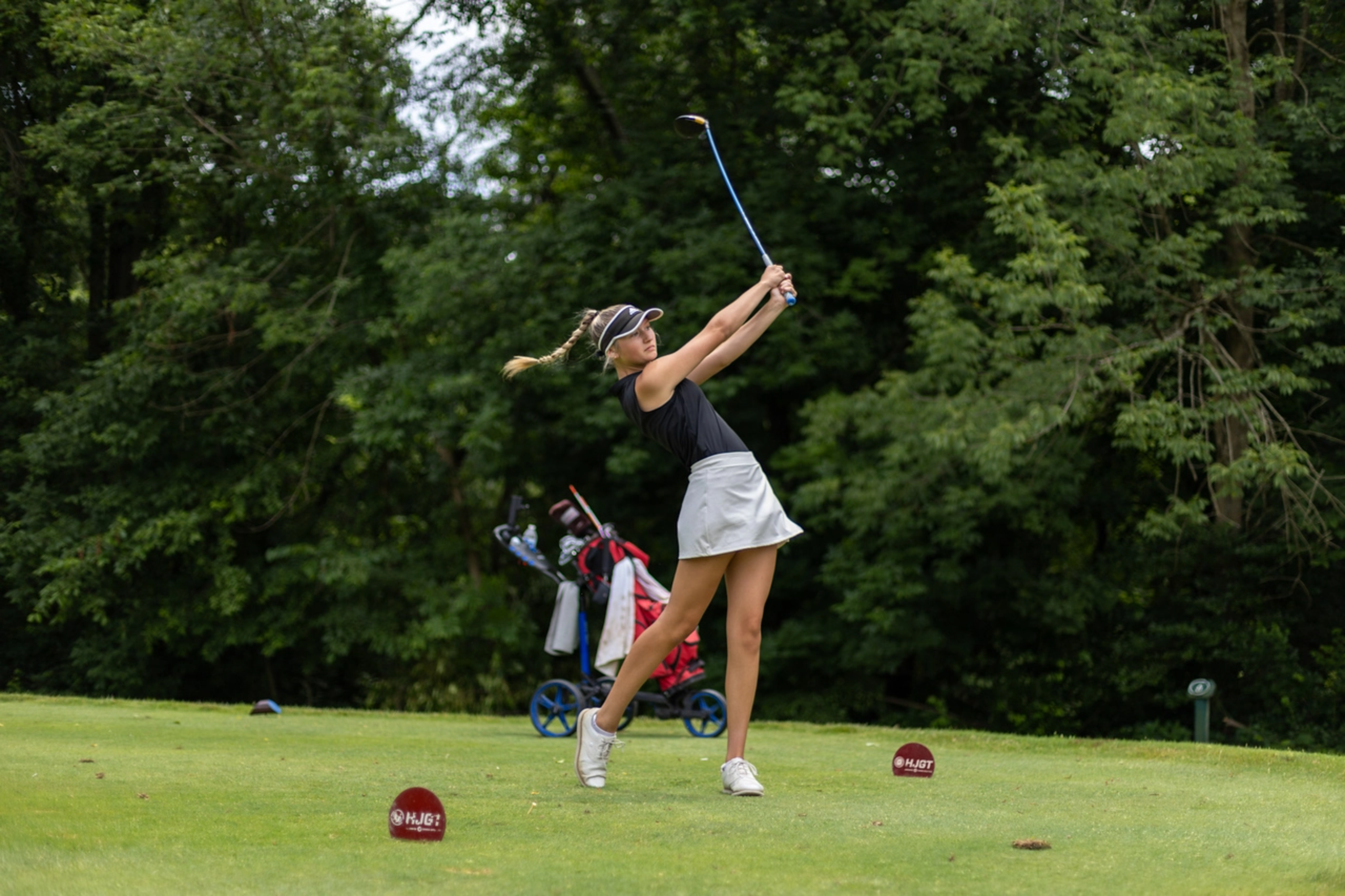By Grant Malloy and Rex Grayner, Hurricane Junior Golf Tour

Having a routine can change everything.
Whether you’re trying to break 80 or compete at the college level, structure is one of the most overlooked parts of performance. You can spend all day on the range, hit a hundred balls, and still leave worse than when you started. Why? Because improvement comes from purpose, not just repetition.
Most people never see what goes into those college tournament results. But behind the scenes, it’s daily, pre-shot, and pre-round routines that hold it all together.
In this article, we’ll break down how top college golfers train with focus and intention, and how your junior golfer can do the same.
The Daily Practice Routine
Let’s start with practice.
Most young players spend way too much time on the range, smacking 7-irons at random targets. Jack Lapiana, a rising junior at the University of Richmond and former HJGT standout, used to do the same thing.
“I needed to learn to spend less time on the range and more time putting, chipping, or working on wedges,” Jack told us. “Trying to perfect a 200-yard shot is a big waste of time. You gain strokes inside 130 yards.”
A solid daily routine isn’t about volume. It’s about structure. Start with stretching and mobility work to prevent injury and loosen up. Then move into your short game: putting, chipping, and wedge control. Jack spends most of his range time now hitting wedges and short irons, not long irons. That’s where scoring happens.
He also recommends planning your sessions in advance. “If you go to the course without a plan, it’s easy to get distracted. But if you have a two-hour block broken into chunks, like 15 minutes of mechanics, 30 minutes of wedge work, and 30 minutes of focused putting, you’ll leave knowing you got better.”
Even days without clubs can be productive. Mental work like visualization and journaling help develop discipline and confidence over time.
The Pre-Shot Routine
Your pre-shot routine is where consistency meets pressure.
The goal here is simple: build a process you can trust, no matter the stakes.
Jack’s routine starts after he picks a club and target. “I step back and look down the line. Then I step in, take a few looks back and forth from the target to the ball, stay moving with waggles or footwork, and once my eyes come back to the ball, I go.”
This repeatable rhythm helps with commitment. Golf is hard enough. Don’t make it harder by changing your process every swing. A good pre-shot routine calms your mind and helps your body perform. It creates a trigger, a moment when you stop thinking and start swinging.
And it doesn’t need to be complicated. Pick a club. Pick a target. Visualize the shot. Take a breath. Then commit.
The Pre-Round Routine
The hour before a round is a chance to get your mind and body ready. You’re not fixing anything or grinding your swing. You’re getting loose, building confidence, and dialing in your feel.
Jack keeps it simple. “I get to the course about an hour early. Light stretching. Wedges to driver. Then I focus on short putts and long lag putts.”
He doesn’t waste time on mid-range putts that rarely drop. And he doesn’t hit driver after driver unless the course requires it. “If I’m only hitting driver five times in the round, I don’t need to hit 25 on the range. I focus on the shots I know I’ll face.”
There’s also a mental side to the pre-round routine: visualization, self-talk, and nutrition. Some players like a consistent pre-round meal. Others need a quiet space to get centered. Find what works for you and stick to it. Avoid rushed starts and never skip warm-up altogether.
How Routines Evolve Over Time
Routines aren’t set in stone.
What worked when you were 13 probably won’t cut it when you’re 17. And once you get to college, your time becomes more limited. Travel, class schedules, team workouts. Everything gets tighter.
That’s why efficiency matters. Jack says his college routine is shorter, more focused, and more structured than ever. “I don’t spend hours on the range like I used to. I work fast. I focus on what matters. And I don’t waste time trying to fix my swing mid-practice.”
Routines are meant to support your goals, not just fill your day. Adapt as you grow.
Building Your Own Routine
If you’re a junior golfer (or the parent of one), here’s a good place to start:
- Daily Practice: Create a plan before you show up. Mix skill work (like mechanics) with performance work (like games and challenges).
- Pre-Shot: Keep it short and consistent. Make sure it clears your mind and gets you into the shot.
- Pre-Round: Get to the course early. Don’t overdo it. Focus on feel, tempo, and mental readiness.
And when motivation dips? That’s when the routine matters most.
“Having a plan keeps you going,” Jack says. “Without it, you’ll just end up killing time and wondering why you aren’t getting better.”
Final Thoughts
Routines won’t fix everything. But they give you something to lean on, especially when nerves hit or results don’t go your way.
They keep you grounded. They give you structure. And they help you trust yourself when the pressure is on.
Golf is a game of habits. Start building good ones.
*************************
Want to help your junior golfer build better routines this season?
Check out one of our upcoming HJGT events where players can put these habits into action: https://tournaments.hjgt.org/Tournament




